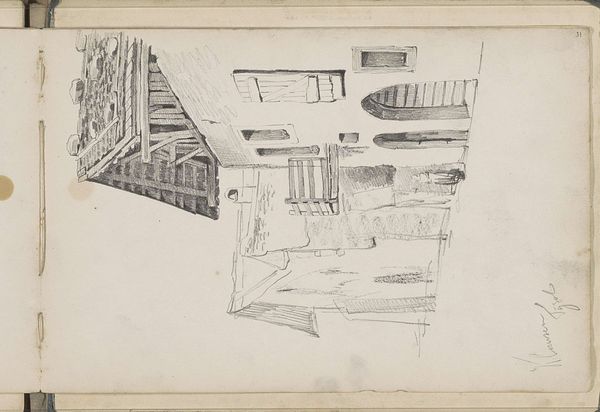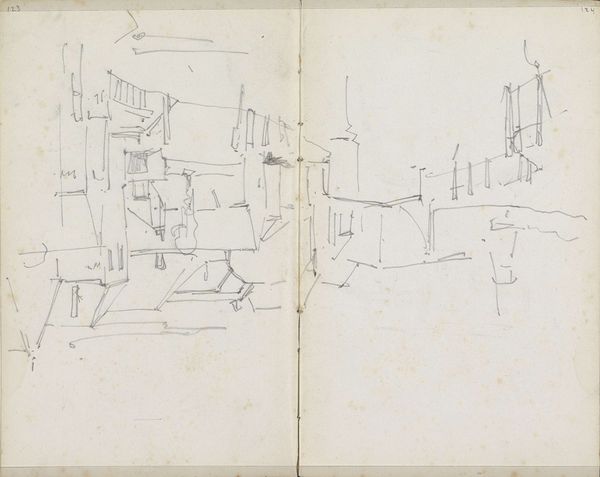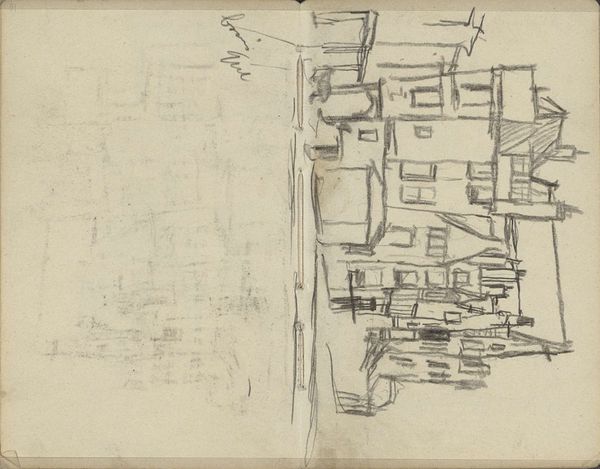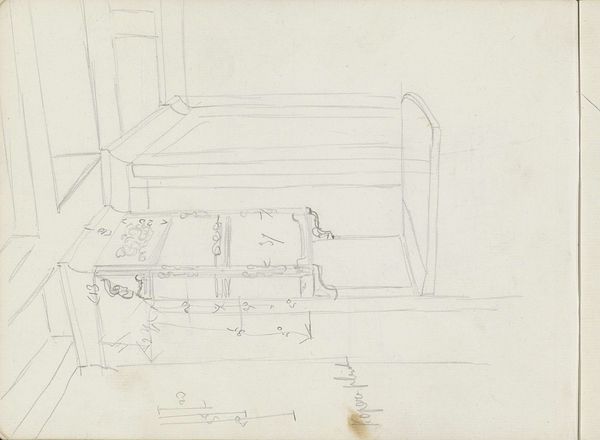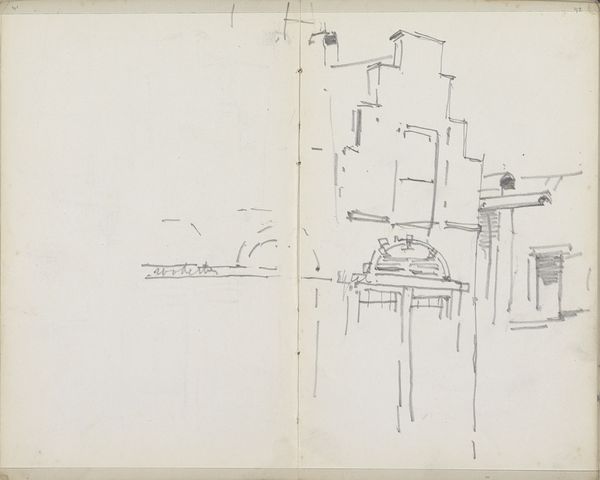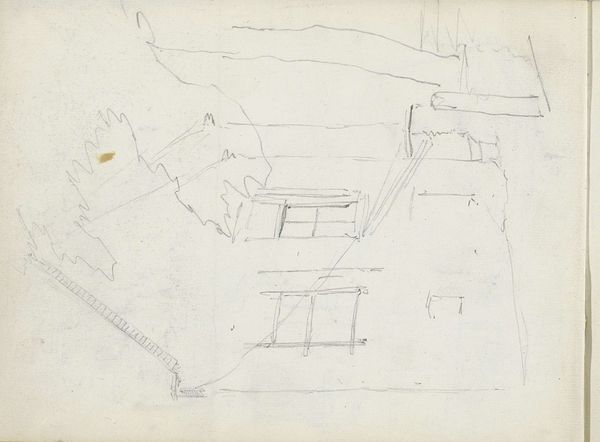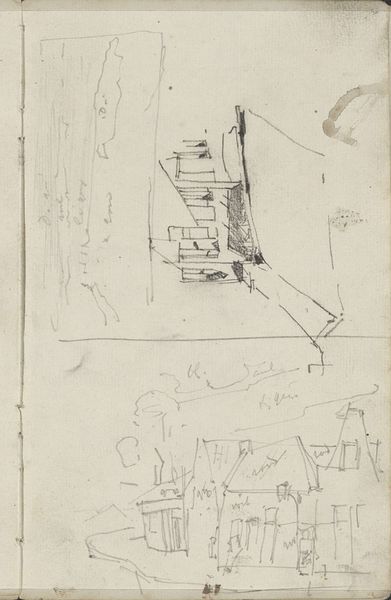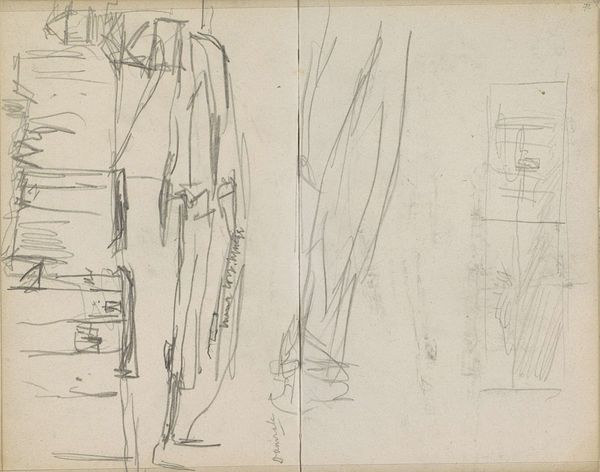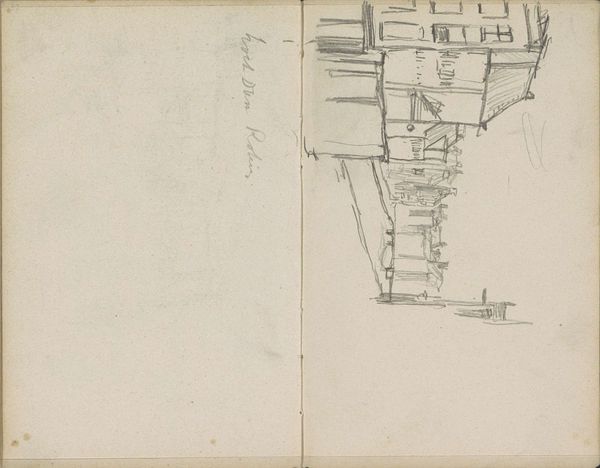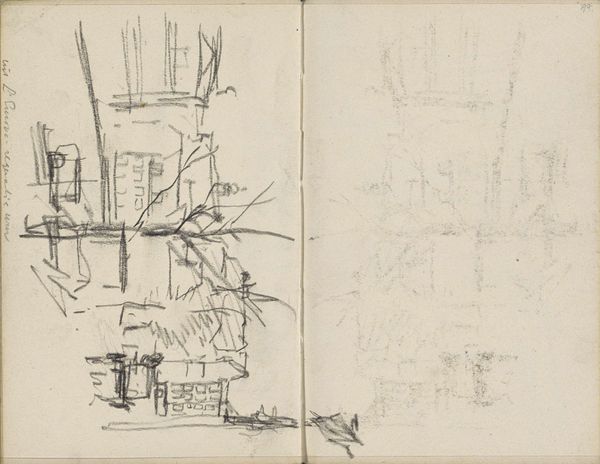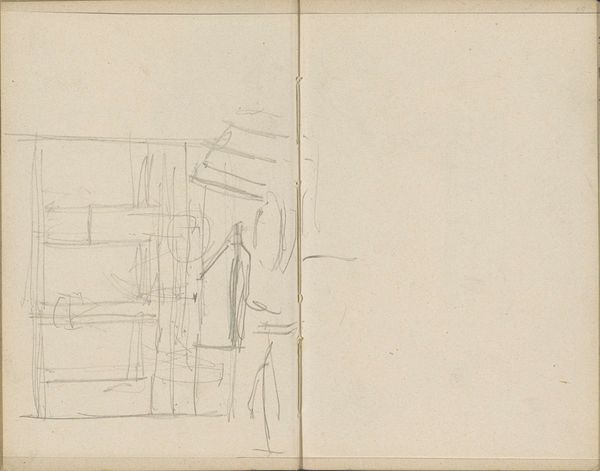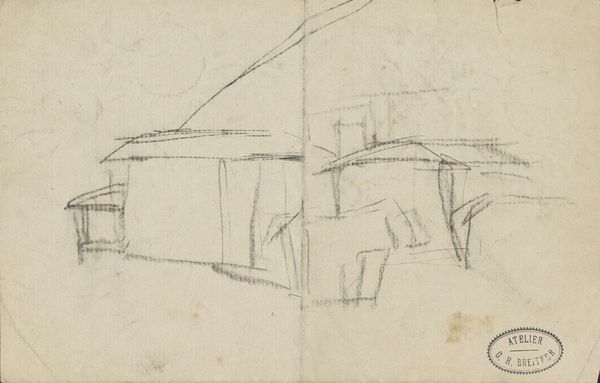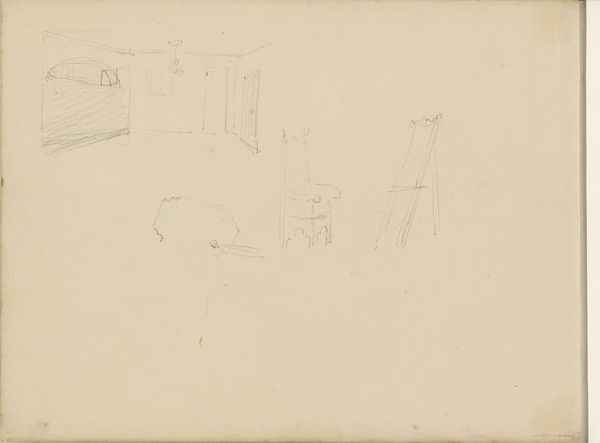
Copyright: Rijks Museum: Open Domain
Editor: So, this is "Interieur met een schouw en trap naar een vide" by Antoon Derkinderen, sketched between 1889 and 1894 using pencil and ink on paper. I'm immediately struck by the unfinished quality, the skeletal lines that hint at an interior space. How do you approach a piece like this? Curator: Precisely that ‘unfinished quality’ is of particular interest. We can analyse this work in terms of its formal structure. The linear composition establishes spatial relationships – note the orthogonals and implied perspective which give the image depth, against the aged paper. The contrasting weights of the lines define shapes and volumes. Editor: So, it's about the relationships between these linear elements more than a representation of a real place? Curator: The ‘real place’ serves merely as a pretext for formal exercises. Notice how Derkinderen repeats geometric forms: squares, rectangles and diagonals recur throughout. Editor: I see that now. It’s like he’s using the interior as a framework to explore lines and shapes. Do you think the lack of shading contributes to this focus? Curator: Absolutely. Absence, or negative space, here becomes an active element, contributing to the overall composition, rather than a mere lack of something. The tonal variations in the paper itself should not be discounted, which accentuates that point. Editor: That makes sense. I was initially thinking of it as a preliminary sketch, but now I appreciate how the lines and their relationships are the primary focus. It’s much more considered than I first assumed. Curator: Indeed. Hopefully you've had your assumptions dismantled; a rewarding outcome of analysis. Editor: Definitely! Thanks for shifting my perspective on this piece. It highlights how crucial it is to look beyond the initial subject matter.
Comments
No comments
Be the first to comment and join the conversation on the ultimate creative platform.
